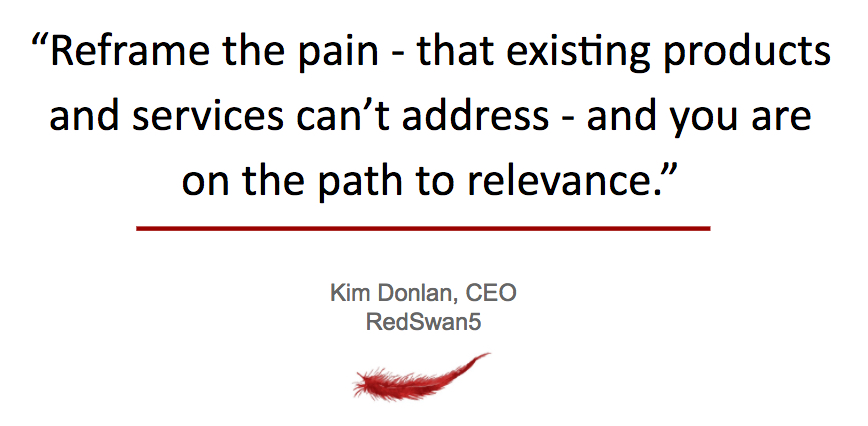We recently helped one of our start-up clients prepare for Unpitch and discovered working with founders at the early stage has a lot of similarities to working with larger brands on building a great story and position. Unpitch is a terrific event that provides opportunities and connections for founders who are closer to the idea stage than the “spit and polish” newbies fresh out of accelerators. Startups attack problems with fresh ideas on how to solve them in much the same way that the very best, most trusted brands do.
Founders and CMOs face the exact same dilemma — deciding how to compete.
- Is the idea a shinier version of what already exists?
- Will the idea disrupt an existing market?
- Will it create a new category or sub-category?
The answers will determine whether you have a relevant brand strategy.
Embracing brand relevance requires creating a product or service that changes the way consumers think. Relevance is where customers don’t need to compare your brand with others. There’s just you and your brand. A simple decision. You are relevant to their lives. You contribute to who they are.
The 3 lessons CMOs can learn from the start-ups are:
#1 — SEEK THE FRUSTRATION AROUND “What Is…”
If you look deeply at your existing customer experience and landscape, you will find gaps and opportunities. They will be disguised as annoyances, frustrations, little moments that piss people off though it seems as if there is no other choice but to suck it up.
A good place to look is market and field research. What does a customer’s life really look like in those micro-moments? How is the customer’s behavior impacted mentally, emotionally, psychologically, physically, culturally, socially and intellectually? Often, you are looking for the accepted frustration of “what is.”
During a class I teach at Bentley, students were working with Misha & Puff, a maker of knitted children’s wear. During the survey and market research, students kept hearing “Paying lots of money for babies clothes is a waste because they grow out of them so quickly.” Students then looked at how children’s clothes used to be made and found they were often knitted because the fabrics could stretch and accommodate children as they grew. An expensive sweater could be used for a longer time and then passed down to another child.

#2 FIND INNOVATION IN THE DECEPTIVELY SIMPLE
To uncover the innovation in front of you, look for what is taking too long to do or is incredibly inconvenient. What system or process just doesn’t make sense any longer? Or, how can you use what you already have in a new way?
In a recent project for the IMAX film, Dream Big, we realized that a film screening during a field trip stood a small chance of inspiring students to consider engineering as a career. We needed to change how an IMAX film was marketed. The film became the centerpiece of a larger collective movement that provided teachers, parents, museums and volunteer engineers with events, resources and curriculum to incorporate engineering concepts into the classroom. Inspired students will be able to experiment with the engineering principles that have led to great achievements.
#3 AND HAVE THE GUTS TO CREATE A NEW MARKET
Carving out a large group of customers is what startups are doing every day as they pitch their ideas to investors. They point to lost opportunities and make a compelling case that shows they really, truly empathize with the people they are trying to help.
Identifying a new market, sub-category or segment is the only way to deliver a product that has any chance of being relevant. It is a bold act.
For CMOs currently in the brand preference cycle, switching to brand relevance requires:
- Seeking true innovation
- Reframing the problem in a way that makes you relevant
- Building it
- Committing to the long view
Startup founders must defend their newness, their novel approach and their deep, personal understanding of what customers are facing every day. We can all learn a lot from them.











